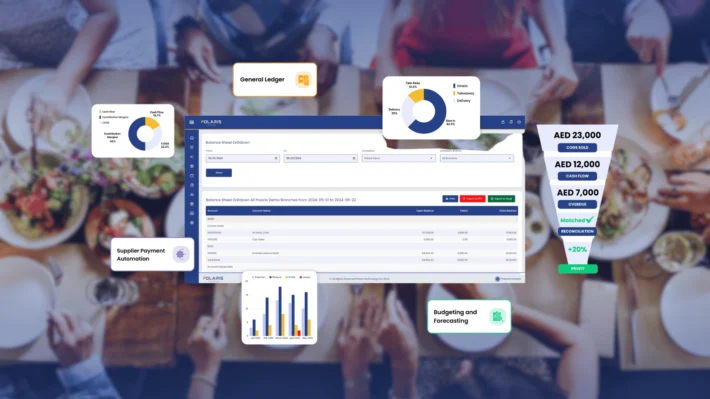How to Save Purchase Costs with Smarter Restaurant Supplier Management

In a food and beverage (F&B) business, restaurant supplier management can have a considerable impact on profitability. From maintaining consistent quality to securing stable pricing, the way you manage suppliers has a direct impact on your bottom line. When you add the complexity of forecasting demand and avoiding over-ordering or shortages, the stakes become even higher. That’s why smarter supplier management – backed by data, visibility, and the right tools – can help you control costs, build stronger supplier relationships, and ultimately save on purchasing costs.
Top Supplier Management Challenges in Restaurants
If you’re handling purchase orders and relying on suppliers for quality ingredients, you’ve likely run into a few problems. Late deliveries, price changes, and messy invoice checks are just a few.
Let’s break these challenges down.
Common Pain Points in Restaurant Vendor Relationships
- Unreliable deliveries
You’ve placed a PO to your supplier three days ago, expecting to receive the order in the morning. But it’s already afternoon, and your chef is asking where the new poultry batch is. You call and email the supplier, and they promise to deliver today; but that’s not good enough. You need to break into your petty cash and purchase poultry from a hypermarket at higher costs. This affects your bottom line, as you’re dealing with an unpredictable expense, which cuts into your profitability. What’s the solution?
- Lack of visibility on price changes
Restaurant grocery suppliers often raise prices in small increments, hoping they go unnoticed. But even the slightest increase – say, just 0.5 AED on a core ingredient like eggs – can eat into your profits. Over time, these small changes add up, raising your cost of goods sold (COGS) and shrinking your contribution margins. What’s the solution?
- Manual follow-up with suppliers
Many restaurant businesses still rely on manual follow-ups to chase suppliers – through calls, emails, WhatsApp messages, or spreadsheets . This scattered process slows things down, increases the risk of errors, and often results in missed updates, delayed deliveries, and weaker negotiation leverage. What’s the solution?
- Over-ordering or under-ordering
Over-ordering or under-ordering usually starts with guesswork, estimating how much stock you’ll need without clear data. The result? You either waste ingredients or fail to meet customer demand. This happens because you’re reacting instead of accurately predicting what the restaurant truly needs. What’s the solution?
Smarter Restaurant Supplier Management
The solution is simple: a restaurant purchase software designed to tackle these challenges head-on. Once in place, it unlocks the ability to track prices in real time and evaluate supplier performance with clear metrics, setting you up for smarter, faster decisions.
A purchase software natively built within an enterprise resource planning (ERP) for restaurants, like Polaris ERP, provides you with everything you need to:
- Know your demand accurately, allowing you to order as much as you need, preventing waste.
- Check suppliers’ performance and understand which are the most reliable vendors, or which ones are practicing price fluctuations.
- Negotiate stable or better prices with your suppliers.
Restaurant Supplier Negotiation Strategies
How to Identify Price Fluctuations in Real-Time
With smart restaurant purchase management software, you can track purchase orders, returns, outstanding item requests, supplier invoices, and allocations – all in real time, all in one system. By having past supplier invoices stored and accessible, you can instantly spot any price fluctuations before approving a new purchase order.
How to negotiate with restaurant suppliers?
To ensure successful negotiation with restaurant suppliers, you need access to know your numbers. Before any discussion, review your order history, pricing trends, and supplier performance. Come to the table with data: how often you order, your total order value over a given timeframe, your payment timelines, and any patterns in price increases from the suppliers’ side. This puts you in a position of strength, helping you ask for fixed pricing, discounts for bulk orders, or added value like faster delivery or credit terms.
Next, be transparent about your intent to continue working with suppliers who offer consistent quality and stable pricing. Let them see the long-term value of your business – it’s not worth risking that relationship over small, short-term gains. At the same time, you have every right to diversify your supplier base. Communicate this openly – not as a threat, but as a practical approach to protect your business. Make it clear that your goal is to build partnerships rooted in reliability and mutual benefit.
Polaris ERP for Supplier Negotiation & Cost Control
Polaris ERP is a restaurant ERP software, developed specifically to support the F&B operations in the UAE, and beyond. It connects every aspect of restaurant operations: point of sale (POS), inventory management, purchase, accounting, delivery, payroll, marketing, and more, into a single, automated platform that delivers real-time data.
With Polaris ERP’s purchase module linked directly to your inventory, you always know what’s in stock and when it’s time to reorder. Looking into the historical sales data showing the top performing and most popular dishes, will allow you to reorder the right ingredients, at the right time, in the right quantities.

Beyond inventory and forecasting, Polaris ERP’s purchase module gives you full visibility into suppliers’ performance. You can easily track which vendors you work with most, how their prices have changed over time, and spot any fluctuations before approving new purchase orders. With this data at your fingertips, you’ll have stronger leverage in negotiations. This will help you prevent unnecessary price hikes and keep your COGS in check.

You can also view food cost trends across custom time periods, with detailed insights pulled directly from supplier invoices stored in the system. On top of that, Polaris ERP highlights your top vendors across different food categories. With this information you can walk into negotiations with a clear picture of how much business you bring to the table. It gives you a stronger case for stable pricing and better terms even stronger.
At the end of the day, supplier management isn’t just about placing orders; it’s about gaining visibility and control. Smarter restaurant supplier management, supported by real-time data and the right tools, puts you in a stronger position to negotiate, monitor costs, and make faster, more informed decisions. With Polaris ERP restaurant purchase software, you can track fluctuations, manage supplier relationships, and avoid unnecessary overspending, ultimately helping you protect your profitability.
You may also be interested in:
Ready to start saving costs?
Book a free demo
One comment
Comments are closed.




[…] Negotiate With Your Suppliers […]